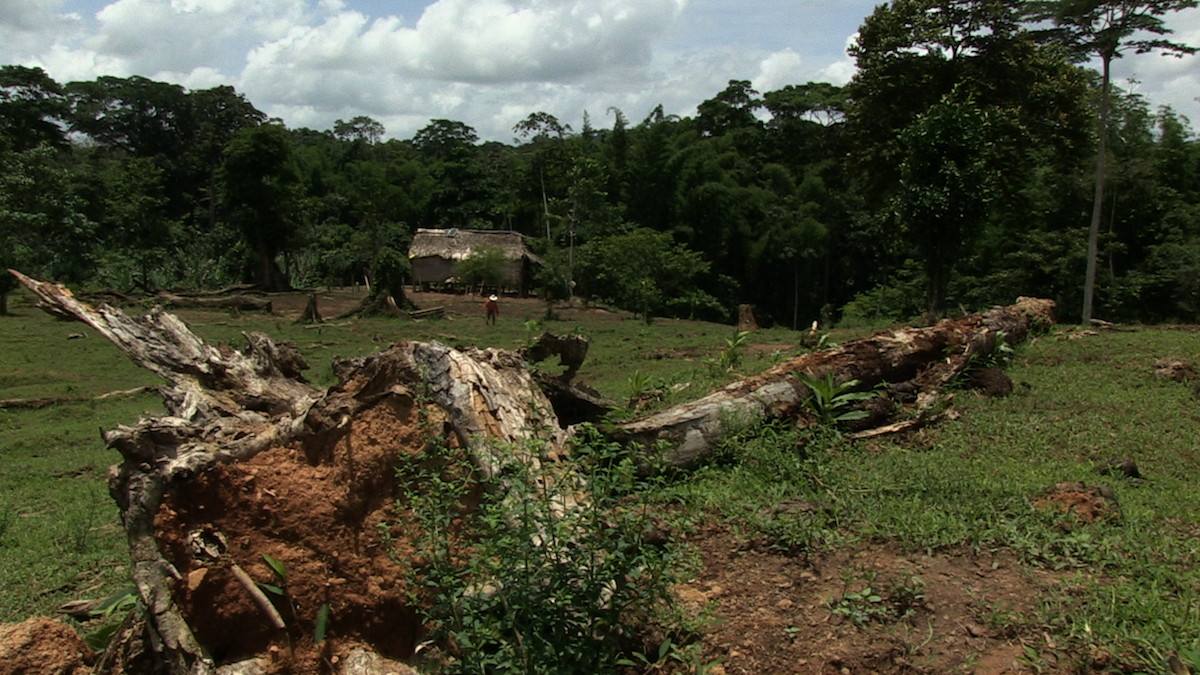- Last week we published an investigation detailing the companies importing beef from Nicaragua and the industry’s links to deforestation and land grabbing in the country’s indigenous autonomous regions.
- This article provides a glimpse of life in the indigenous regions and how people there are coping with an influx of settlers and cattle ranching.
- Mongabay visited Nicaragua’s South Caribbean Coast Autonomous Region in October last year.
Read the original investigation.
TIKTIK KAANU, Nicaragua – Laughter drifted up from the riverbank, where the glow of fireflies pulsed on and off between the tree trunks. It was Friday night, and Anthony Oscar Omier and other indigenous Rama teachers had made their weekly trek to teach Saturday high school classes in Tiktik Kaanu, a community in Nicaragua’s South Caribbean Coast Autonomous Region.
At the end of every regular school week in Rama Cay, they travel by motor boat through the Bluefields Lagoon and up the Kukra River, past stands of forest and lands cleared by outsiders. One week the teachers found themselves without transport and rowed the whole way in a dugout canoe.
“It took us four hours,” Omier said, laughing. “Good exercise!”
Indigenous Rama and Afro-descendant Kriol communities received their joint title to communal lands ten years ago, but little support since. The government never followed through with addressing non-indigenous settlers within the territory, and the onslaught of outsiders clearing land for pasture has only risen since the title was issued. The nine Rama and Kriol communities and their territorial government are doing what they can largely on their own.
Omier and his colleagues settled into their Friday night routine, setting out mattresses and hammocks in a Tiktik Kaanu leader’s wooden home. The teachers took turns bathing with a bucket outside under the stars while others cooked up fish and rice for dinner. Omier had settled into a hammock to review his lesson plan for English classes the next day.
“We want to educate and prepare our Rama teenagers and adults for a better future, so that they can make good decisions and defend their own rights and interests with identity,” Omier told Mongabay.
Along with local youth, non-indigenous students travel up to two hours by horseback to take the Saturday classes. Indigenous Rama and Afro-descendant Kriol residents are outnumbered in their own territory by mestizos, non-indigenous Nicaraguans. Co-existence is a reality, but the expansion of illegal settlements and cattle ranching is devastating the region.
“In the whole territory, there is the advance of the agricultural frontier and extensive cattle farming – very extensive,” said Omier. “They invade the land. Then they sell it to others.”
For years, the influx of non-Nicaraguans has wrought environmental destruction and sparked conflict in titled indigenous communal lands in the country’s north and south autonomous regions. Deforestation is the most visible consequence, but settlers also fish, hunt and farm, using agro-chemicals, with no regard for sustainability or the impact their activities have on the communities that rely on the forest and resources, said Omier.
“Species are disappearing. Hunting is not the same as before, because they destroy the habitat of species such as deer, peccaries and others that we as Rama consumed. There is no forest. They are destroying the habitat with extensive cattle farming,” he said.
Omier was one of the first Rama teachers to graduate with a degree in education, more than twenty years ago. He tried to effect change in politics as an elected representative to the regional council of the South Caribbean Coast Autonomous Region, but quickly became disillusioned. He was one of only two Rama members of the 45-member council, and everything revolved around party politics and the interests of Bluefields, the main city in the region, he said.
“It was a bad experience,” he said. “There is discrimination… As a minority, we always end up losing.”
Rama and Kriol communities also have their own governance system, and the territorial government is the authority for land and other matters within titled communal lands. That does not stop lawyers from issuing illegal land sale documents within the title, but community and territorial authorities do what they can to address issues directly with settlers, said Rama-Kriol Territorial Government secretary Dalila Padilla. Still, the influx of outsiders is non-stop.
“In all the communities, and the whole territory, there are similar problems with the invasion of settlers,” Padilla told Mongabay. “It is a different culture than ours.”
Back in Tiktik Kaanu, the teachers finished up their preparations for the next day’s high school classes, attended by more than 60 students. After his disappointing stint in politics, Omier returned to teaching. He sees hope in educating and empowering the next generations to stand up for their communities and protect communal lands.
“The situation is very, very lamentable, he said. “Natural resources are for today and tomorrow.”
Feedback: Use this form to send a message to the editor of this post. If you want to post a public comment, you can do that at the bottom of the page.
Banner image: Deforested areas in Bosawás Biosphere Reserve in the North Caribbean Autonomous Region seen in 2017. Photo by Michelle Carrere
